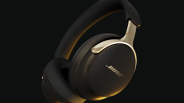Hawaii lawmakers just passed a law that will ban people from using certain sunscreens that could be harmful to the environment.
Banning Bad Chemicals
On Tuesday, May 1, Senator Mike Gabbard (D, Kapolei-Makakilo) introduced Senate Bill 2571 into the Hawaiian Senate. The bill prohibits the sale of sunscreens that contain two chemicals: oxybenzone and octinoxate.
Various reports have indicated that the two sunscreen ingredients have been toxifying coral reefs and harming marine life. If Hawaii's governor, David Igle, approves the bill, it will become a law effective Jan. 1, 2021.
Identifying The Products
Both oxybenzone and octinoxate have been found in several products not only in Hawaii but also around the world. Several different sunscreens such as Hawaiian Tropic, Banana Boat, and Coppertone have products containing these ingredients. The chemicals have also been reported to be found in several face creams.
The Tragic Consequences
Last month, the Haereticus Environmental Laboratory released a study that showed the harmful effects the two chemicals had on Hanauma Bay, one of Hawaii's snorkeling bays. Their research uncovered that oxybenzone could not only damage the coral but could also deform and eliminate young coral. Scientists stated that the chemical affected several sea creatures such as shrimp, scallops, and sea urchins.
Craig Downs, an ecotoxicologist for the Haereticus Environmental Library, noticed that due to Hanauma Bay's toxicity levels, there was less marine life.
"Anything above basically 50 nanograms per liter of seawater of oxybenzone can induce toxicity in a variety of marine organism. That affects coral, algae, sea urchins, algae eaters, all of them. That's why there's less fish," said Downs in a statement to Outside Magazine.
Finding Solutions
Downs and his fellow scientists came up with several alternatives to protect Hanauma Bay. One option was to eliminate tourism from the area and allow the coral reef to recover. Another solution was ban visitors from using sunscreen products at Hanauma Bay. The third alternative was to prohibit the sunscreen that contains both oxybenzone and octinoxate.
A Great Barrier Reef Update
Hanauma Bay is not the only coral reef that is dealing with toxicity issues. On April 19, PLOS Genetics published a study that highlighted how staghorn corals were able to survive the Great Barrier Reef's warmer temperatures. Also, the coral could survive another 100 to 250 years, due to its genetic compounds and how fast the planet's temperature escalates.
Researchers pointed out in the journal Nature that a marine heat wave that hit the Great Barrier Reef in 2016 led to a massive elimination of corals. They also noted that the heat wave was driven by the increasing amount of carbon dioxide and greenhouse gases in the atmosphere.
To protect the Great Barrier Reef from further damage, scientists from the University of Melbourne and Australian Institute of Marine Science have developed a sun shield, a film-like material that is 50,000 times thinner than human hair and is designed to block the sun from hitting the Great Barrier Reef.
ⓒ 2026 TECHTIMES.com All rights reserved. Do not reproduce without permission.




